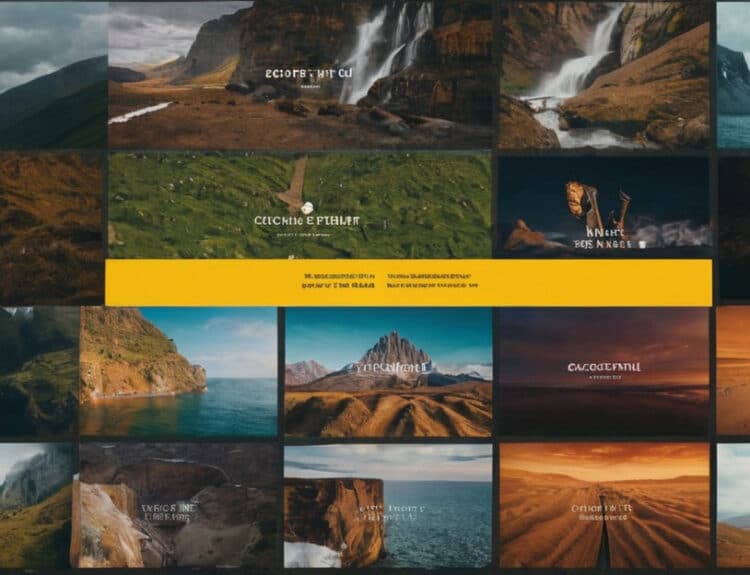
Introduction: The Importance of a Stellar Freelance Artist Portfolio
In today’s competitive art world, having a freelance artist portfolio that stands out is crucial. Your portfolio is not just a collection of your works; it’s your personal brand. It showcases your skills, style, and the unique value you bring to potential clients. Whether you’re a painter, illustrator, graphic designer, or digital artist, your portfolio can make or break your career. In this guide, we’ll delve deep into the secret formula for creating a winning freelance artist portfolio that will help you land your dream projects and clients.
1. Curate Your Best Work
When it comes to compiling your portfolio, quality trumps quantity. Select your best pieces that showcase your range, skill, and unique style. Aim for diversity, but ensure that each piece is a strong representation of your capabilities. Avoid the temptation to include every project you’ve ever worked on. Instead, focus on pieces that you are proud of and that have received positive feedback.
2. Create a Cohesive Visual Identity
Your portfolio should reflect a consistent visual identity. This means that your design, color schemes, typography, and layout should all align with your personal brand. A cohesive visual identity not only makes your portfolio look professional but also helps potential clients understand your unique artistic voice. Consistency in style reassures clients that you can deliver a specific aesthetic across different projects.
3. Tell a Story with Each Piece
Each artwork in your portfolio should tell a story. Include descriptions that explain the concept, the process, and the tools you used. This not only adds depth to your work but also allows clients to see the thought process behind your creations. Detailed descriptions can help potential clients understand your approach and problem-solving skills, making you a more attractive candidate for their projects.
4. Showcase Versatility and Specialization
While it’s important to showcase a variety of styles and techniques, you should also highlight your specialization. If you have a niche, make sure it’s prominently featured in your portfolio. Clients looking for a specific style will appreciate seeing your best work in that area. However, versatility can also be a selling point, so balance showing your range with emphasizing your niche expertise.
5. Include Client Testimonials and Case Studies
Client testimonials and case studies add credibility to your portfolio. They provide social proof that you’ve successfully completed projects for satisfied clients. Include testimonials that highlight your professionalism, communication skills, and ability to meet deadlines. Case studies can offer a more detailed look at specific projects, showcasing the challenges you faced and how you overcame them.

6. Optimize for SEO
An SEO-optimized portfolio increases your chances of being discovered online. Use relevant keywords such as “freelance artist,” “illustrator,” or “graphic designer” throughout your portfolio. Ensure your images are properly tagged with alt text and that your website is mobile-friendly. These steps can improve your search engine rankings and make it easier for potential clients to find you.
7. Keep It Updated
Your portfolio should be a living document. Regularly update it with new works, client testimonials, and case studies. An outdated portfolio can give the impression that you’re not actively working or improving your skills. Set a schedule to review and update your portfolio every few months to ensure it reflects your current abilities and achievements.
8. Make It Easy to Navigate
A user-friendly portfolio is crucial for keeping potential clients engaged. Ensure your portfolio is easy to navigate with a clean, intuitive layout. Use categories or sections to organize your work, making it easy for visitors to find exactly what they’re looking for. Avoid clutter and ensure that each piece is easily accessible.
9. Use High-Quality Images
The quality of the images in your portfolio can make a significant difference. Use high-resolution images that accurately represent your work. Poor-quality images can detract from the perceived value of your art. Ensure your images are well-lit, properly cropped, and showcase the details of your work. If possible, invest in professional photography or learn basic photo editing skills to enhance your portfolio.
10. Include a Strong About Me Section
Your “About Me” section is an opportunity to connect with potential clients on a personal level. Share your background, artistic journey, and what inspires you. This section should be well-written and reflect your personality. A compelling “About Me” section can help clients feel more connected to you and more confident in hiring you for their projects.
Conclusion: Your Path to Success
Creating a winning freelance artist portfolio is a combination of showcasing your best work, telling your story, and optimizing for visibility. By following these steps, you can create a portfolio that not only highlights your artistic talents but also attracts the clients and projects you’ve always dreamed of. Remember, your portfolio is a reflection of you—make it as unique, professional, and compelling as you are. With dedication and attention to detail, you can craft a portfolio that sets you apart in the competitive world of freelance art.







